Electrical Stimulation Machine
Introduction of Electrical stimulation machine :
- Electrical stimulation machine produce A current which in magnitude can stimulate a motor nerve and so produce contraction of muscles .
- Which it supplies ,when the absence of a motor nerve the muscle fibers can be stimulated directly by a suitable current .
- Intermittent currents are used in both cause and a considerable range of such current is available .
- The duration of the current used ranges form 0.01 milliseconds to 3 seconds .
- Impulses with a duration of less than 10 ms a short duration and are used for stimulating normal muscles.
- Such impulse are said to be of the faradic type .
- The repetition rate of the impulses is great , usually 50 – 100 second .
Types of current use in ES therapy :
- Faradic type current
- Interrupted direct current
Faradic type current :

- It is a short – duration interrupted direct current .Pulse duration of 0.1 – 1 ms and a frequency of 50 – 100 Hz .
- Faradism was originally used to signify the type of current produced by a coil of faradic , which is a type of induction coil .
- The current provided by coils was an unevenly alternating current .
- Each cycle consisting of two unequal phases .
- The first of low intensity and long duration .
- The second of high intensity and short duration .
- The frequency was approximately 50 Hz and the duration of the second phase , which was the effective one , about 1 ms.
Electronic simulators :

- Faradic coils have now been superseded by electronic simulators .
- These supply currents which produce the same physiological effects as the original faradic currents , although often differing considerably form them in wave form .]
- The features essential for the production of the physiological effects are that impulses with a duration of between 0.1 and 1 ms are repeated 50 – 100 per second .
- Electronic simulators for the production of faradic – type current works on the same principles as that for the interrupted .
- But the resistances controlling the duration of the impulses and the intervals between them have a very low value to give the required duration and repetition rate .
Modified faradic current :
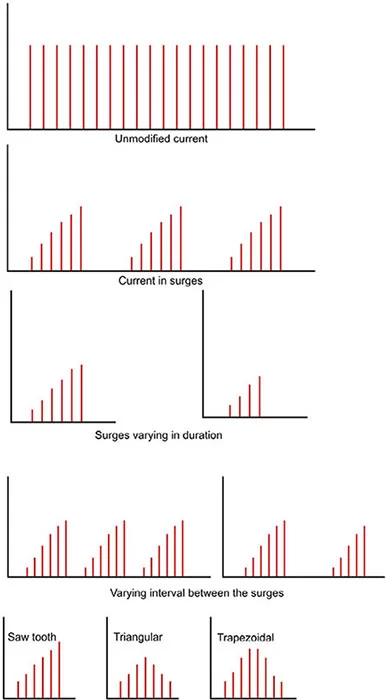
- Unmodified current = use of faradic type currents are to treatment purpose to produce a near – normal titanic – like contraction & relaxation muscle.
- Surged current = the current is surged so that the intensity of successive impulses increase gradually, each impulse reaching a peak value greater than the preceding one, then falls, either suddenly or gradually .
- For original faradic coils the current was produce by hand , but electronic device is used for modern stimulators .
- The circuit can be modified to give surges of various duration , frequency , wave forms .
- It is desirable that the duration of the surges and the interval between them should be regulated by separate controls in order that the most Satisfactory muscle contractions and rest periods can be obtained for each patients.
Electrical activity of nerves :
Nerve transmission

- Owing to difference in concentration of ions inside and outside the plasma membrane, there is a difference of potential between inside and outside of a nerve.
- The resting nerve is positive outside and negative inside and the plasma membrane is not permeable to sodium ions .
- This is described as the polarized stages of the membrane.
- When a nerve a stimulated, the stimulus causes a fall in a the potential difference across the plasma membrane.
- When this fall reaches a certain critical level it causes an alteration in the permeability of the membrane to sodium ions .
- Result of this alteration in concentration of ions inside and outside and further fall of PD until a reveal of polarity occurs.
- Now membrane is positive inside and negative outside.
- Immediately after this activity the sodium ions are pumped out again and that part of the nerve returns to its resting state.
- The difference of potential between the active and resting part of nerve causes local electron flow between the active and adjacent parts of the nerve .
- Now the current flows through the membrane in the opposite direction to potential difference [ PD] across the fibers .
- The fibers acts as a resistance to the current , so that the current flow lowers the PD , thus making the membrane permeable to sodium ions , which reverses the PD as before .
- These changes are then propagated along the length of the nerve fibers .
- This wave of change of polarized state constitutes the passages of an impulse along the nerve .
Electrical stimulation of nerves :
- A nerve impulse can be initiated by an electrical stimulus .
- To achieve this , a varying current to adequate intensity must be applied .
- The plasma membrane of the nerve fibers forms a resistance which lies in series the other tissues , so PD is set up across it as the current flows .
- The surface of the membrane nearer to the cathode becomes negative in relation of the opposite surface .
- The surface of the membrane nearer to the anode becomes positive in relation of the opposite surface .
- If the PD falls below the level at which the membrane becomes permeable to sodium ions , these ions beings to enter the axon and initiate the series of events describes above so that a nerve impulses is initiated .
- An impulses is initiated if the PD falls sufficiency across any part of the plasma membrane of the nerve cells or fiber .
- The current spreads in the tissues , so the current density is rather loss on the further surface of the nerve fibre than on the nearer one , in Consequence the anode is less and effective than the cathode in initiating an impulses .
- The active electrode should be connected to the cathode which produces a contraction of innervated muscle with less current than is required at the anode .
Accommodation :
- When a constant current flows the nerve adapts itself, by a mechanism not fully understood , to altered condition ,this effect is known as accommodation .
- Fall in current is also initiate an impulse .
- While the current flows as a constant level accommodation of nerve take place and PD resulting form the current flow no longer affects the excitability of the nerve fiber .
- However a fall in current is less effective than rise in initiating an impulse.
- It is the side of the nerve nearer to the anode that is affected and so the anode produce a greater stimulation then the cathode .
Effect of nerve stimulation :
- When a nerve impulses is initiated at a nerve cells or an end organ , there is only one direction in which it can travel along the axon , but if it initiated at some point on the nerve fiber it is transmitted simultaneously in both directions form directions from the point of stimulation .
- When a sensory nerve is stimulated the downward – travelling impulses has no effect , but the upward travelling impulses is appreciated when it reaches , conscious levels of the brain .
- If impulses of different duration are applied , using the same current for each , it is found that the sensory stimulation experienced wires with duration of the impulses .
- Impulses of long duration produce an uncomfortable , stabbing sensation , but this becomes less as the duration of the impulses is reduced until with impulses of 1 ms and less only a mild prickling sensation is experienced .
- When a motor nerve is stimulated , the upward – travelling impulses is unable to pass the first synapse , as it is travelling in the wrong direction , but the downward – travelling impulses passes to the muscles supplied by the nerve , causing them to contract .
- When a stimulate is applied to a motor nerve trunk , impulses pass to all the muscles that the nerve supplies below the point at which it is stimulated , causing them to contract .
- When a current is directly over an innervated muscle , the nerve fibers in the muscle are stimulated in same way .
- The maximum response is obtained either from stimulation at motor point , which is the point at which the main nerve enters the muscle or in the case of deeply placed muscles , at the points where the muscle emerges form under cover of the more superficial ones .
Effects of frequency of stimulation :
- When a single stimulation is applied , impulses pass simultaneously to a number of motor units so that in normal circumstances there is a sudden brisk contraction , followed by immediate relax ion .
- If a succession of stimuli are applied at rather long intervals , such as one stimulus per second , each produces an isolated muscle contraction and there is time for complete relaxion until at frequencies exceeding 20 Hz there is not time for complete relaxation between the contraction , so that partial tetanus results .
- further increases in the frequency reduces over 60 Hz , there is no perceptible relaxation and the contraction is fully titanic .
Strength of contraction :
- This depends on the number of motor units activated and the rate of changes of current .
- If the intensity of current rises suddenly there is no time foe accommodation to take place and a muscle contraction results .
- If the current rises more slowly , as with the trapezoidal , triangular and saw – tooth impulses , there is some accommodation and a greater intensity of current is needed to produce a contraction.
Physiological effects of faradic type current :
- The tissue of the body are capable of transmitting an electric current because the tissue fluid contains ions and so are conductors .
- Consequently the current passing through the body consists of a two – way migration of ions and the conductivity of the different tissues varies according to the amount of fluid that they contain .
- Muscle = good conductor
- Fat = poor conductor
- The current tends to travel through those tissues which have a low resistance , although it is not always possible for it to avoid the high resistance layers .
- The epidermis has a high resistance 1000 or more because of it contain little fluid and superficial layers do not readily absorb moisture .
- The current must pass through the epidermis and appropriate measures are used to reduce its resistance when applying electrical treatments .
- passage of current may results in chemical changes , which can constitute a danger in some treatments .
Stimulation of sensory nerves :
- When a current of faradic type is applied to the body , a mild prickling sensation is experienced .
- This is due to stimulation of the sensory nerves and is not very marked because the stimuli are of fairly short duration .
- The sensory stimulation causes a reflex vasodialation of the superficial blood vessels , so that there is slight reddening of the skin [ erythema ]
- The vasodialation is generally confined to the superficial tissues and is of little practical importance .
Stimulation of motor nerves :
- Faradic type current stimulation to the motor nerves and if the current is of sufficient intensity , causes contraction of the muscles which they supply .
- because the stimuli are repeated 50 times per second or more , the contraction is titanic .
- if this type of contraction is minted for more than a short period of time , muscle fatigue is produced , so the current is commonly surged to allow for muscle relaxation .
- when the current is surged the contraction gradually increase and decrease in strength , in a manner similar to a voluntary contraction .
Effects of muscle contraction :
- When a muscle contracts as a result of electrical stimulation , the changes taking place within the muscle are similar to those associated with voluntary contraction .
- There is increased metabolism , with a consequent increase in demand for oxygen and foodstuffs and an increased output of waste producted , including metabolites .
- The metabolic cause dilatation of capillaries and arterioles and there is a considerable increase in the blood supply to the muscle .
- As the muscle contract and relax they exert a pumping action on the vein and lymphatic vessels lying within and around them .
- The valves in these vessels ensure that the fluid they contain is moved towards the heart .
- If the muscle contraction are sufficiently strong to cause joint movement this also exerts a pumping effect .
- There is thus increased venous and lymphatic return .
Stimulation of denervated muscle :
- The current is required to produce a contraction of denervated muscle with an impulse lasting for 1 ms is usually too great to be tolerable for treatment purposes .
- The faradic type of current is therefore not satisfactory for the stimulation of denervated muscle .
Chemical effects of faradic type of current :
- If direct current is passed through an electrolyte , chemical changes take place in electrodes .
- If the chemical formed come in contact with the tissue there is a danger of electrolytic burns , although the danger is appreciably less with an intermittent than the constant direct current .
- When the current is alternating , the ions move one way during one phase of current and in the reverse direction during the other phase and if the two phases are equal the chemical formed during one phase are neutralized during the next phase .
- If however the reverse wave of current is not similar to the forward wave , there are chemical changes which could cause an electrolyte burn .
- The current obtained from electronic apparatus may have a greater flow in one direction the chemical formation should not be great enough to give rise to a serious danger of burns .
Indications for use of faradic type currents :
Facilitation of muscle contraction :
- When a patient is unable to produce a muscle contraction so electrical stimulation may be of use in assisting voluntary contraction .
- A muscle contraction is the result of a complex integration of the neuronal circuit both at spinal level and from the higher centers .
- Excitation of the small efferent fibers , which causes contraction of the intrafusal muscle fibers .
- Stretching of the muscle spindle which stimulates the primary nerve ending and therefore sends information to the large anterior horn cells and causing an excitation of the extrafusal muscle fibers .
- Inhibiting of the anterior horn cells supplying the antagonistic muscle group .
- Pain has an inhibitory effect on the large anterior horn cells , so impending the transmission of impulses to the motor units .
Re – education of muscle action :
- Inability to contract a muscle voluntarily may be the result of prolonged disuse , as in the intrinsic foot muscles in along standing flat foot or of incorrect use ,as with the abductors hallucis in hallux valgus deformity.
- Faradic stimulation may be also used to produce contractions and help to restore the sense of movement .
- The brain appreciates movements , not muscle actions , so the current should be applied in such a way that it causes the movements that the patients is unable to perform .
- Active contraction should be attempted at the same time as the electrical stimulation , the treatment being a preliminary to active exercise .
- It will probably take longer to establish voluntary contraction .
Training a new muscle action :
- After tendon transplantation or other reconstruction operations a muscle may be required to perform a different action from that which from that which it previously carried out.
- A new movement patterns has to be establishes .
- The muscle is stimulated with the faradic – type current , so that its new action is performed and the patient must concentrate on the movement and attempt to assist with voluntary contractions .
- In this way , then muscle action may be taught , although it will take longer to achieve this than to re – educate an action which the muscle has previously performed.
Neurapraxia of a motor nerve :
- In this causes impulses form brain are unable to pass the site of the lesion to reach the muscles supplied by the affected nerve .
- May be voluntary power is reduced or lost .
- There is , however , no degeneration of the nerve , so that if it is stimulated with faradism below the site of the lesions , impulses pass to the muscles , causing them to contract .
Severed motor nerve :
- When a nerve has been severed , degeneration of the axons take place and there is no longer a satisfactory response to stimuli of short duration .
- Degeneration of muscle take place several days and for a few days after the injury .
Improved venous and lymphatic drainage :
- Increased venous and lymphatic return is by the pumping action of alternate muscle contraction and relaxation and of joint movement on the veins and lymphatic .
- The treatment is effective when current is applied by the method as faradism under pressure .
Prevention and loosening of adhesion :
- When there is effusion into the tissues , adhesion are liable to form nut these can be prevented by keeping structures moving with respect to each other .
- If adequate active exercise is not possible , electrical stimulation may be used for this purpose .
- Adhesion which have formed may be stretched and loosened by the muscle contractions .
Preparation of apparatus for faradic current :
- Electronic simulator [ low – frequency ]with automatic surge is mostly used .
- The therapist should test the machine by attaching leads and electrodes to the terminals , holding the two electrodes in a moistened hand , inserting the core if a smart – bristow coil is being used and turning up the current until a mild – prickling sensation is experienced and a muscle contractions produced.
- Describe to the patient the sensation you feel and make sure the patient can see the muscle contractions produced.
- If the surging is automatic the duration and frequency of the surge should be tested .
- Check that the apparatus is far enough away form [ approximately 2 metres ] an operating short – wave therapy machine to prevent output disturbance by radio frequency [ RF ] energy .
- The active electrode may be a disc electrode or a small lint / sponge pad with a flat plate – electrode .
- The latter is preferable for large muscles like the quadriceps and gultei, as it is easier to mold to the surface , so obtaining good contact .
- Flat plate and lint / sponge pad electrodes are used for the indifferent , to complete the circuit .
- The pads consist of at least eight layers of lint , so that they are thick enough to make good contact with the tissues and with the electrodes and to absorb any chemical which might be formed .
- They should be folded evenly with no creases or there Wii be uneven distribution of current and consequent dis comfort .
- The pads and lint covering the disc electrode are socked in warm 1 per cent saline .
- Tap water may be used , but the addition of salt reduce the resistance of the wetting solution , 1 per cent saline having a rather lower resistance than the tissue fluids .
- Electrodes should be 1 cm smaller all round than the pads , to reduce the danger of their coming in contact with the skin and causing uncomfortable concentration of current and possible damage to the tissue from chemical actions .
- The corners of the electrodes should be rounded , as point may become bent and dig into the pads , again causing concentration of current .
Preparation of the patient for faradic current :
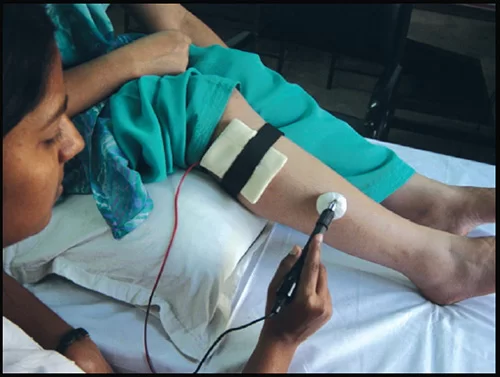
- Clothing is removed from the area to be treated and patient is supported comfortably in a good light.
- It is important that the patients is warm, otherwise the muscle do not respond well to the stimulation.
- It is usually easier to obtain muscle contraction is response to electrical stimulation if the part is supported so that the muscle are in a shorted position .
- Position is modified according to required .
- If the aim of the treatment is to re -educate to muscle action , the patient may be arranged so that movement is produced when the muscle contracts [ For quadriceps = knee arranged in slight flexion so that extension take places when the muscle stimulated]
- In some cases movement can be obtained by supporting the limb in slings during the treatment [ for deltoid = movement of shoulder joint the arm is supported in slings ]
- Joint movement avoided if it causes pain , which will inhibit muscle action .
- Skin has a high electrical resistance so that resistance is reduced by washing with shop and water to remove the natural oils and moistening with saline immediately before the pads applied .
- For broken skin is protected by a little petroleum jelly covered with small piece of non – absorbent cotton wool to protect the pads .
- The indifferent pad should be large to reduce the current density it to a minimum .
- The indifferent electrode may be bandaged or fixed with a rubber strap or body weight may be hold the position .
Stimulation of motor points for faradic current :
- It is different for every nerve and every muscle.
Muscle of facial nerve :
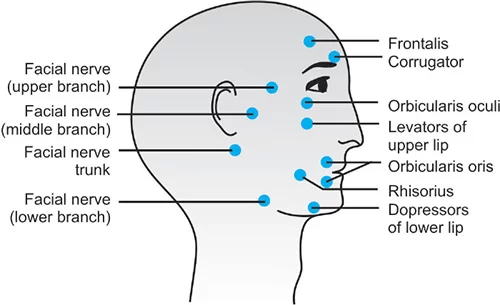
- Frontalis
- Corrugator
- Orbicularis ocuil
- Orbicular oris
- Orbicular oris
- Buccinator
- Depressor anguli oris
- Depressor labii inferiors
- Mentalist
Muscle of anterior aspect of arm & hand :
- Delotid [ anterior , middle fibers ]
- Biceps
- Brachilas
- Coracobrachialis
- Pectoralis major
- Pronator teres
- Brachioradialis
- Flexor carpi radialis
- Flexor pollicis longus
- Palmaris longus
- Flexor carpi ulnaris
- Flexor digitorum profundus
- Flexor digitorum superficialis
- Flexor pollicis brevis
- Opponens pollicis
- Abductor pollicis brevis
- Lumbricals
- Flexor and oppnens digiti minimi
- Abductor digiti minimi
Muscle of posterior aspect of arm & hand :
- Deltoid [ middle and posterior fibers ]
- Triceps [ long head, lateral head & medial head ]
- Extersor carpi radialis longus
- Extersor carpi radialis brevis
- Extersor digitorum
- Extersor digiti minimi
- Extersor carpi ulnaris
- Supinator
- Extersor pollicis longus
- Abductor pollicis longus & extersor pollicic brevis
- Adductor pollicis
- Interossei

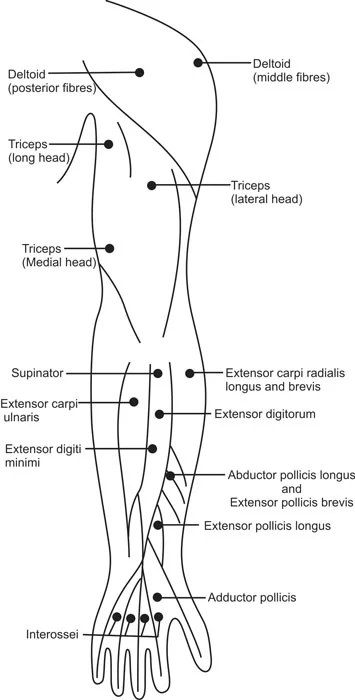
Muscle of anterior aspect of leg :
- Sartorius
- Rectus femoris
- Vastus laterlis
- Vastus medialis
- Peronus longus
- Tibialis anterior
- Extensor digitorum longus
- Peronus brevis
- Extensor digitorum brevis
- Extensor hallucis longus
- Abductor hallucis longus
Muscle of posterior aspect of LEG
- Gluteus medius and minimis
- Gluteus maximus
- Biceps femoris
- Semimembranosusand semitendinosus
- Gastrocnemius
- Soleus
- Flexor hallucis longus
- Flexor digitorum longus
- Tibialis posterior
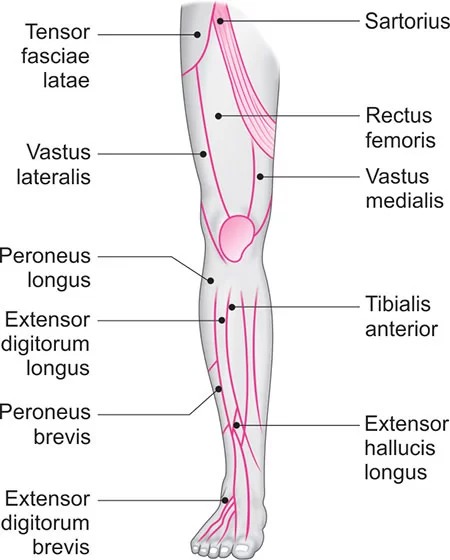

Muscle of back :

- Trapezius muscle [ upper, middle & lower fibers ]
- Supraspinatus
- Rhomboids
- Infraspinatus
- Teres major & minor
- Serratus anterior
- Latissimus dorsi
Stimulation of muscle groups by faradic current :
- Stimulation which makes all the muscles of a group work together is a satisfactory method of re – educationg the action of muscle which normally works as a group such as quadriceps , small muscle of foot and the muscle of pelvic floor .
Quadriceps muscle :
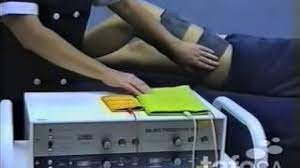
- Position on the patient with a plinth in affected knee in supported flexion .
- One electrode [ 12 X 9 cm ] placed over the femoral nerve in the femoral triangle & hold with the sandbag or bandage.
- Use jaconet to protect clothes and bandage form moisture .
- Select a suitable duration and frequency for a gain a good contraction followed by complete relax ion of the muscle .
- Give several gentle contractions to allow the patient become accustomed to the current , then increase the intensity gradually until a strong contraction is achieved.
- Instruct the patient to contract the muscle voluntarily when the current pass.
- When the patient achieve a voluntary contraction then discontinue the treatments .
Small muscle of foot :
- It is also called faradic foot bath .
- Electrical stimulation by faradic – type current may be applied in baths , water makes perfect contact with the tissues , the encumbrance of of pads and Electrodes is avoided and prolonged socking reduces the resistance of the skin .
- Position the patient in sitting on a plinth with the back well supported and feet on a stool which is covered with a plastic sheet .
- This position may have to be adapted for older patient or patients with a history of dizziness .
- Place the patient’s foot in a bath containing enough warm water to cover the toes .
Lumbrical muscles :
- To stimulate the lumbrical muscles , place two electrodes transversely across the bottom of the bath , one under the heel and the other obliquely under the metatarsal heads .
Interossei muscles :
- To stimulate the planter interossei , place one electrode on each side of the foot at the level of the metatarsal shafts .
Abductor hallucis :
- Place one electrode under the heel and stimulate the muscle through the motor point using a button electrode .
- In three methods select a suitable duration and frequency for a gain a good contraction followed by complete relax ion of the muscle .
- Give several gentle contractions to allow the patient become accustomed to the current , then increase the intensity gradually until a strong contraction is achieved .
- Instruct the patient to contract the muscle voluntarily when the current pass.
- It may be impracticable to stimulate the small muscle groups of the foot in the water if the patient has a foot infection, pes cavus, an open unhealed wound.
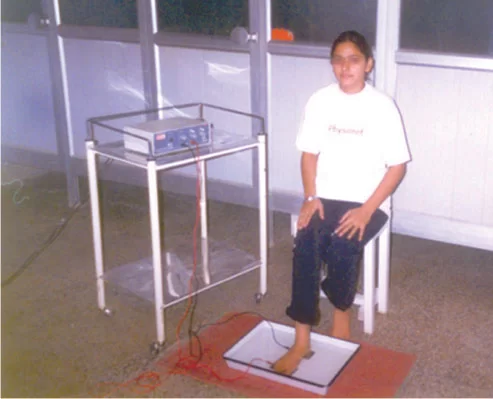
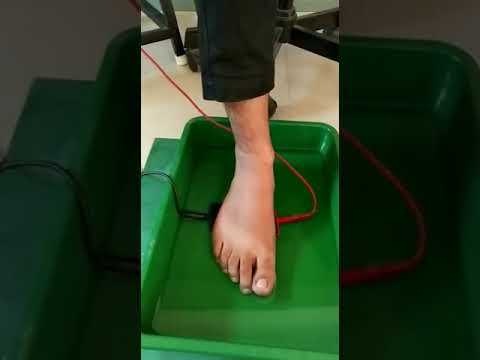
Muscle of the pelvic floor :
- Electrical stimulation can be of considerable assistance in the re-education of these muscles in early causes of prolapse of the pelvic organs and in stress incontinence (Bladder Bowl Incontinence).
- There are various method of applying the current , but a good contraction of the muscles must be obtained and vaginal electrodes in often the most satisfactory method of achieving this .
- Voluntary contractions must be attempted at the same time as the electrical stimulation; electrotherpy is an accessory to the exercise, which are an essential part of the treatment.
- male patients suffering from incontinence following prostatectomy may be treated by corresponding method using a rectal electrode.
- position the patients in side – lying with a pillow between the lower legs.
- a large electrode is placed & secured on the lumbosacral region.
- sterilized lubrication jelly is rubbed onto rectal electrode.
- select a suitable duration and frequency for a gain a good contraction followed by complete relaxation of the muscle.
Interrupted direct current/galvanic current :

- The most usual modification of direct current is interrupted and the flow of current is commencing and ceasing at regular intervals .
- The rise and fall of intensity may be sudden or gradual .
- The duration and frequency of impulses can be adjusted , mostly used 100 ms , but it is increase up to 300 or 600 ms .
- For 100 ma impulses duration requires a frequency of about 30 per minutes .
- If the duration is increased so frequency must be reduced .
- Depolarized impulse = a low – intensity reversed current by some equipment between the impulses giving . .
- The passage of a direct current thought an electrolyte causes chemical changes to take place at the electrode .
- Now that constant d.c. current is rarely used because of the chemical burn .
- Risk is reduced by the use of the depolarized impulses .
Production of the interrupted direct current :
- It is produced by the accomplished in modern apparatus by circuit which employ transistors and timing devices .
- The length of the pulse of electricity produced can be varied by alternating the parts of the circuit through which current flows and selector switch provides a choice of several different fixed – interval pulses and frequencies .
- Current is mostly applied to the patient via a potentiometer and intensity of current is started form zero .
Physiological effects of interrupted direct current :
- Provided that the intensity of current and duration of impulses are adequate a contraction of devernated muscle can be initiated.
- The motor nerve is stimulated when the contraction are sluggish the contraction and relaxation being slower than
Stimulation of sensory nerve :
- The impulses are of fairly long duration so the effect is rather marked , giving rise to a stubbing or burning sensation .
- There is reflex dilatation of the superficial blood vessels and consequent erythama of the skin .
Stimulation of motor nerves :
- The stimuli are frequently repeated , so each one produce a brisk muscle twitch followed by immediate relaxation.
- There is therefore little beneficial effect on the muscles.
Indication of the interrupted direct current :
- Contraction of denervated muscle
- When a muscle a is deprived of its nerve supply , changes in its structure and properties tend to occur .
- There is marked wasting of the muscle fibers and if degeneration is of long – standing , they tend to become fibrosed and to lose their properties of Irritability , cons tractability , extensibility and elasticity .
- These changes is slow down by the electrical stimulation of the muscle fibers .
- It is also restore the muscle bulk or their properties .
- It is also use for re – education of muscle
- It is produced the adequate number contraction
Selection of type of impulses :
- For good contraction = rectangular impulses
- When the rectangular impulses the rise is sudden , the the trapezoidal fairly slow .
- With the triangular slower and with the saw – tooth slower still .
Duration of impulses :
- For denervated muscle contraction = 100 ms
- Shorter impulses fail to contract .
- Innervated muscle contraction = 300 or 600 ms
Methods of application of interrupted direct current :
Labile technique :
- One pad fixed over the origin of the muscle group and the active electrode stimulate to muscle
- Active electrodes is a disc or small pad which is either held over the lower enf of the fleshy belly of the muscle to be stimulated or stroked slowly down it.
- Advantages = this method produce the optimum contraction of each muscle
- Disadvantage = it is not practicable to produce a large number of contraction of each .
Stabile technique :-
- Two disc electrodes used
- One electrode over the origin and other electrode over the lower end of the muscle group .
- Advantages = this method is useful for the deeply muscles which is difficult to isolate & permit a large number of contraction.
- Disadvantage = it is difficult for the operator to hold both electrodes .
Another technique :
- Use the active pad which completely covers the muscle or group of the muscle .
- Circuit is completed with a large directing or indifferent electrode .
Preparation of equipment of interrupted direct current :
- Testing of apparatus is same as the faradic type current .
- Check the covering of the disc electrode and pads consist of at least eight layers of lint .
- It is need in treatment because risk of the chemical burn with long duration pulses if the treatment is given at the same spot for the long period of time .
- No metal should be allowed to come into contact with the patient’s tissue .
Preparation of the patient :
- The skin is prepared by washing and protecting abrasions as for treatment .
- It possible to use warm water because it is the lower resistance of the skin .
- But if the extensive loss of sensation must be taken that the water is not too hot .
- For more easily contraction = shortened position
Application of interrupted direct current :
- Muscle contraction are often obtained most easily if the electrode is connected to the anode but this is not always the case .
- Each patient should be tested to determine whether the anode or cathode produce the better response , and the effective pole used for active electrode .
Different between faradic and interrupted direct current :
| NO. | Faradic current | Interrupted direct current | |
| 1 | Direction | Biphasic with variable amplitude | Constant in direction & amplitude |
| 2 | Duration | Short < 1 ms ” interrupted AC “ | Long 100 ms ” interrupted DC “ |
| 3 | Frequency | 30 -100 Hz | Low < 30 Hz |
| 4 | Source | Dynamo | Batteries and accumulators |
| 5 | Stimulation of motor nerves | Mainly ++ of innervated muscle titanic contraction if >50 Hz | +++ of denervated muscle brisk contraction on make & on break |
| 6 | Stimulation of sensory nerves | Pricking sensation VD [ erythama ] | Burning sensation reflex VD [ sympa ++ ] |

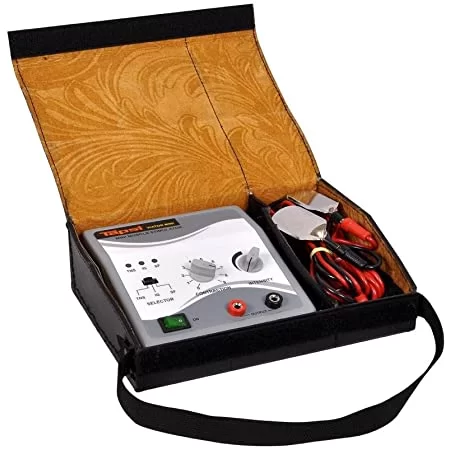
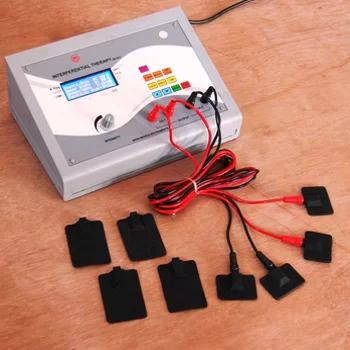

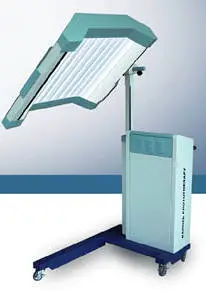
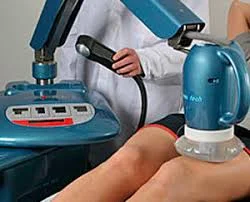

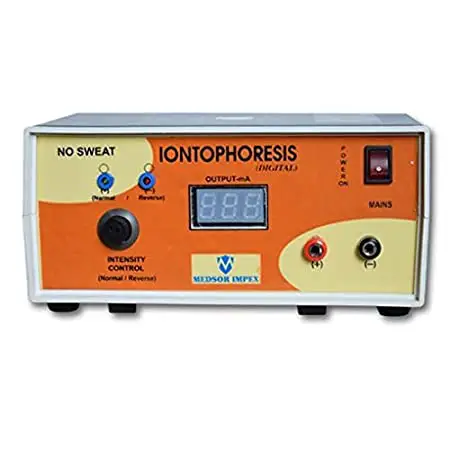
If you are looking for complete details of Electrical stimulation, This article is best for you, Faradic current, Galvanic current all the details in one article.